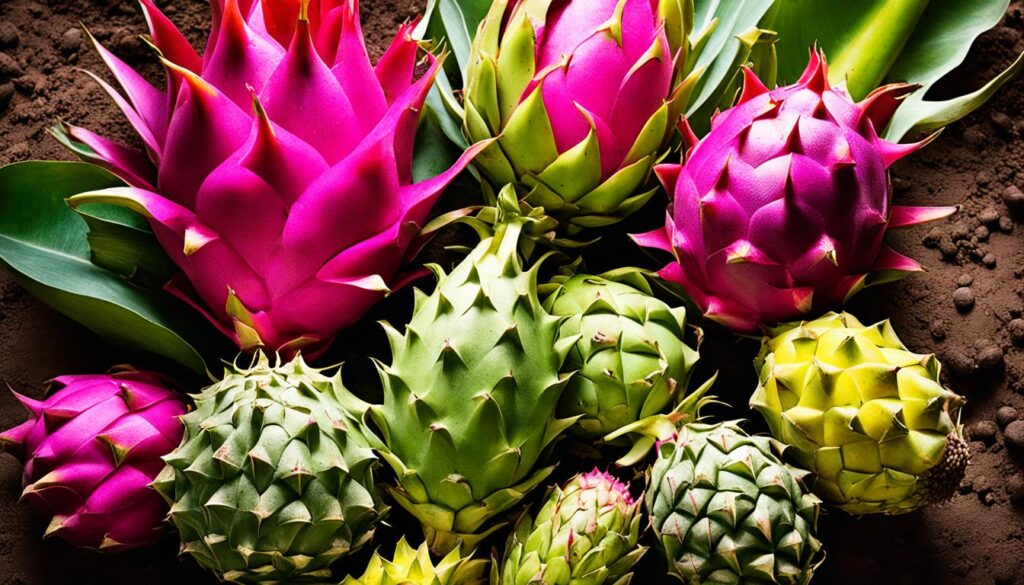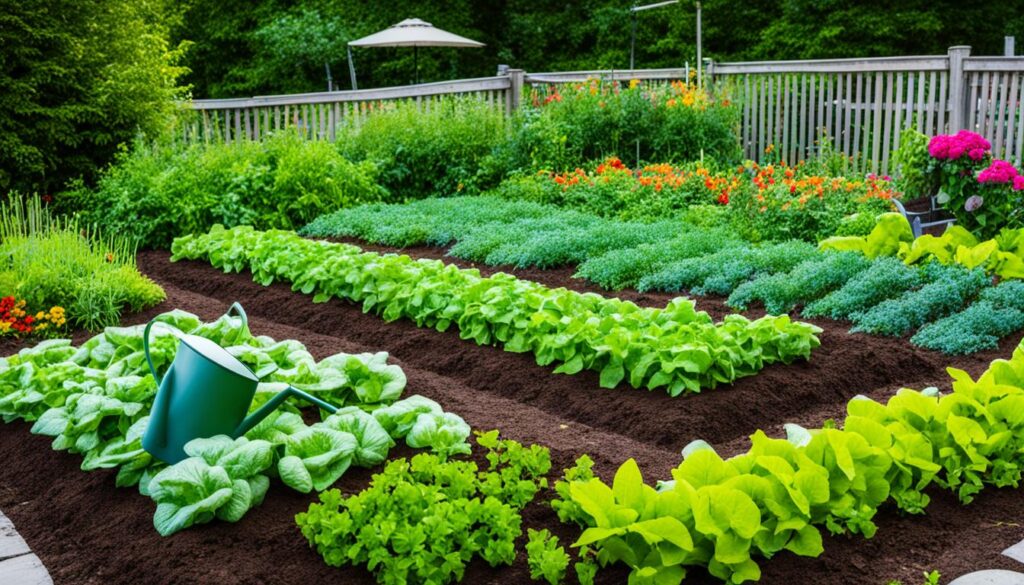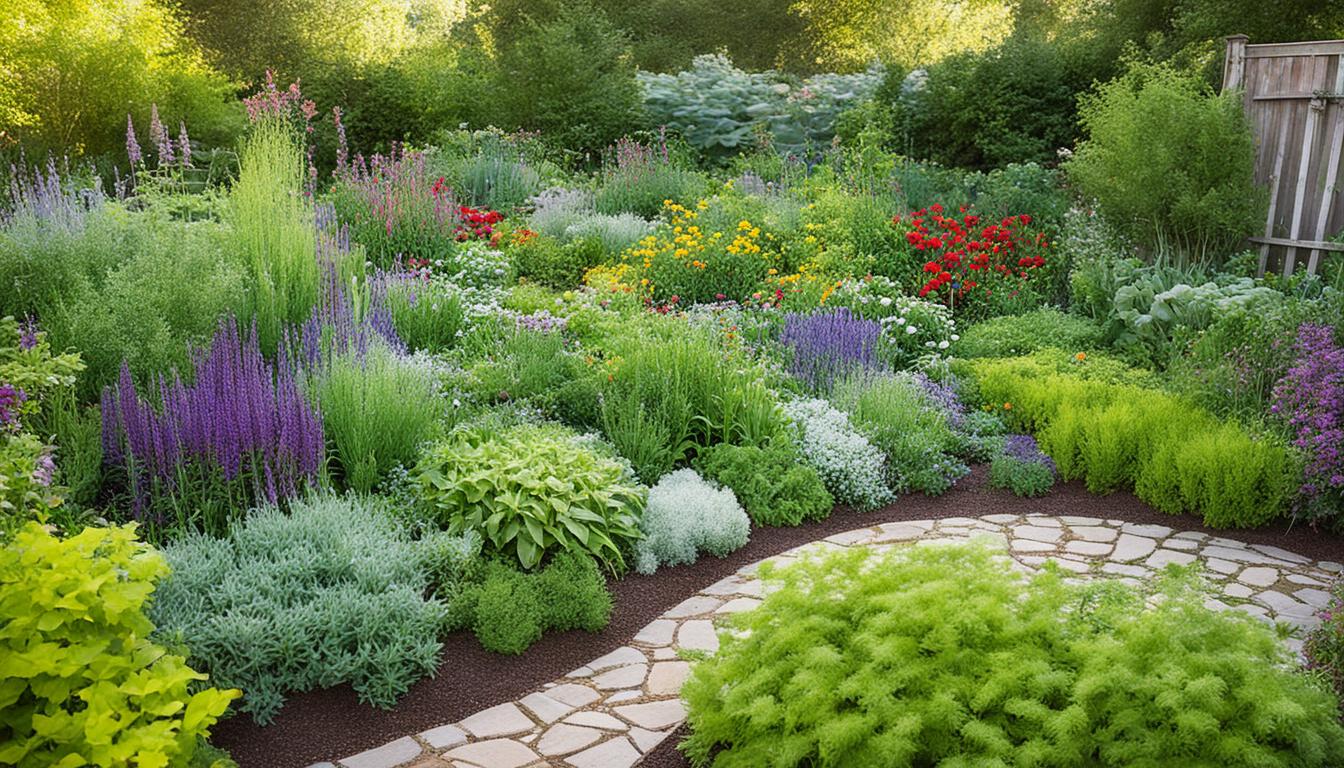Home gardening is rewarding. It lets you connect with nature and create a beautiful oasis right at home. To make your garden thrive, use expert strategies and proven tips. With the right knowledge, your garden can become a lush space that will make your neighbors envious.
Whether you’re just starting or have years of experience, certain strategies will help. Use these home gardening tips to turn your garden into an inviting outdoor escape. It will bring joy and peace to your daily routine.
Assessing Water Needs for Your Garden
Proper watering is key for a thriving garden. You need to correctly figure out how much water your garden needs. This way, your plants will grow healthy. It’s all about knowing the right amount of water, when to water, and how often.
Using a Rain Gauge
A rain gauge is a great tool to figure out your garden’s water needs. It measures the rain your plants get. This helps you know if you need to water more or less. Put the gauge in an open area. Check it often to see how much rain you’re getting.
How Much Water to Use
Knowing how much water your plants need is vital. To check if they need water, feel the top inch of soil. If it’s dry, water them. Usually, about an inch of water a week is good for most plants. But, keep in mind, the type of plants you have might need more or less.
Watering Schedule
Having a watering schedule is a good idea to keep your plants moist. It’s best to water in the morning or evening to reduce water loss. This helps your plants use water well and lowers the chance of them getting sick.
Having a schedule also makes sure your plants get water when they need it. But always check if they need more or less, based on the weather. This keeps your garden healthy.
Water Needs for Common Garden Plants
| Plant | Watering Requirements |
|---|---|
| Tomatoes | Regular watering, keep soil consistently moist |
| Lettuce | Regular watering, keep soil evenly moist |
| Peppers | Regular watering, keep soil consistently moist |
| Zucchini | Regular watering, allow soil to dry slightly between waterings |
| Herbs (e.g., basil, rosemary, thyme) | Allow soil to dry slightly between waterings to prevent root rot |
Understand your garden’s water needs to keep it lush. Use a rain gauge and a schedule. This way, you won’t over or under water, helping your garden grow beautifully.
Essential Gardening Tools
The right tools for gardening are key. They make gardening both fun and easy. Whether you’re just starting or have been doing it for a while, good tools are a must. They make many tasks simpler. You should own these important gardening tools:
1. Wheelbarrows
Wheelbarrows are a gardener’s best friend for moving heavy stuff. They’re great for hauling dirt, compost, and plants. A good wheelbarrow saves you time and energy by letting you carry more at once. When picking one, go for something tough, large, and easy to move.
2. Pruning Shears
Pruning shears, or secateurs, are vital for your plants’ health. They trim and shape flowers, shrubs, and small trees. Don’t forget to keep them sharp and clean. This helps your plants stay healthy and neat.
3. Gloves
Gloves are essential for keeping your hands safe from harm. They protect against blisters, thorns, and rough surfaces. It’s best to choose gloves made from strong, but flexible materials. This like leather or synthetics. They should fit well and not limit your movement.
These essential tools show how important the right gear is. They make your gardening time not only more fun but also more productive.
Easiest and Hardest Plants to Grow
Some plants are easier to grow than others in gardening. For both new and experienced gardeners, knowing the care needed for each plant is key. We will look at plants perfect for beginners and those that might be tougher.
Easy Crops to Grow
Start with plants that are easy to grow if you’re new. Garlic is a great choice. It adds tasty zest to food and is simple to grow. Use store-bought bulbs to begin. With just a little attention, you’ll grow your own aromatic garlic easily.
Difficult Plants to Grow
Some plants need extra care and skill to do well. Asparagus is one of them. It needs specific soil, water, and climate conditions. It also takes patience since it might be a few years before you can harvest it. Broccoli and tomatoes can also be tricky due to diseases and bugs. But, with the right care and know-how, you can still have success.
| Easy Crops to Grow | Difficult Plants to Grow |
|---|---|
| Garlic | Asparagus |
| Radishes | Broccoli |
| Lettuce | Tomatoes |
When picking plants for your garden, think about your skills, time, and resources. For beginners, it’s wise to start easy and move up to harder plants. Gardening is a journey of learning and trying new things.

Gardening in Limited Spaces
No backyard, no problem. You can still garden. Container gardening works great in small areas. Just use pots, grow bags, or hanging containers to make your own garden.
With containers, plant anything from herbs to cherry tomatoes. Plant on your balcony, windowsill, or driveway. Container gardening is all about using any spot you can.
Benefits of Container Gardening:
- Maximizes limited space:
- Allows for easy mobility and rearrangement:
- Provides better control over soil conditions:
- Reduces the risk of weeds and pests:
- Offers accessibility for those with physical limitations:
Thinking about gardening in a small area? Container gardening is your answer. Pick the right containers, soil, and plants. Make a little garden space work for you.
| Container Type | Advantages | Disadvantages |
|---|---|---|
| Pots | – Easy to move – Variety of sizes available |
– Limited space for root growth |
| Grow Bags | – Lightweight and portable – Excellent drainage |
– Less durable than pots |
| Hanging Containers | – Utilizes vertical space – Decorative and space-saving |
– Limited soil volume |
Small space? No problem if you love gardening. Use containers and watch your garden thrive. You can still turn your space into a green oasis.
Making Use of Garden Themes
Themed gardens are a great way to organize your space. A garden with a theme reflects your style and interests. It makes your outdoor area both charming and unique.
Creating a Pizza Garden
A pizza garden is a great choice for a themed garden. It includes herbs and veggies you often use on pizza. Just picture picking your own basil, tomatoes, and peppers for a tasty pizza.
- Basil: This fragrant herb is essential for pizza. It grows best in sunny spots.
- Tomatoes: Pick tomatoes that do well in your area. Cherry tomatoes are perfect for this garden.
- Peppers: You can grow sweet or hot peppers. Bell peppers and jalapenos are good choices.
Add a fun item like a wooden pizza sign. It will make your garden more interesting and fun to talk about.
Creating an Herb Garden
Herb gardens are a cool theme. They flavor your food, smell nice, and attract helpful insects. Plus, they’re easy to care for.
- Basil: Basil comes in many types, including sweet and lemon. Try a mix in your garden.
- Mint: Mint is fresh in drinks and desserts. Plant it in a container to keep it controlled.
- Parsley: It’s used in a lot of dishes and looks nice as a garnish.
Label your herbs and add some flair to your garden. You can use cute pots, stake signs, or an herb marker.
Adding Garden Decor
Decorations can make your garden more inviting. Statues, bird feeders, wind chimes, and stepping stones add a personal touch.
Pizza Garden Plants
| Plant | Requirements |
|---|---|
| Basil | Full sun; well-draining soil |
| Tomatoes | Full sun; amended soil with organic matter |
| Peppers | Full sun; fertile soil |
Garden Planning Tips for Beginners
For a successful garden, planning is key, especially for those just starting. This planning and prep work will help you do well in gardening. Here are tips to kick off your garden planning:
Selecting the Right Location
The spot you pick for your garden is very important. It should get enough sun all day. Most plants do best with at least six hours of direct sun. Also, think about how close the garden will be to your home. Putting it near your house makes it easier to take care of your plants and enjoy the space.
Ensuring Water Availability
Your plants need water to grow and stay healthy. Having water close by will make taking care of them much easier. Think about if there’s a water source nearby or if you can easily access a hose. Planning for water now will make sure your plants get the water they need to thrive.
Understanding Sun Exposure
It’s important to know where the sun shines most in your garden before planting. Watch how the sunlight moves during the day. This will show you which areas get more shade. Different plants like different amounts of sunlight. By matching your plant choices to your garden’s sunlight, your plants will grow well.
Considering Soil Quality and Composition
Good soil is essential for your garden to do well. Before you start planting, check your soil’s health. A soil test can tell you about the soil’s pH and nutrients. This info will help you choose the right plants and care for them properly.
Exploring Container Gardening and Raised Beds
Don’t have much space or good soil? Try container gardening or raised beds. You can use pots or build garden beds above the ground. Both methods let you control the soil quality, drainage, and keep weeds away.
Following these planning tips will help you make the most of your garden experience, even as a beginner. Knowing the best location, about sunlight, ensuring there’s water, checking the soil, and trying different gardening methods will help you succeed and have fun.

Selecting the Right Plants for Your Garden
Choosing the right plants for your garden is key to their healthy growth. Think about what your garden has, like how much sun it gets, the weather, and kind of soil.
Researching different plant types is crucial. Pick ones that do well in your area and need the same care as in your garden.
Buying young plants from good places is a smart move. Local nurseries or garden centers often have the best plants for your region.
Native plants are a good addition too. They’re used to your area and usually need less water and care. Plus, they can bring in birds and butterflies.
Planning Your Plant Selection
Plan out your garden space before choosing plants. Know the size and shape of the plants when they are fully grown.
Creating a garden plan helps you see how plants will look together. Include a variety of plants to keep your garden beautiful all year.
Group plants that need the same care together. This makes looking after them easier. Mix in annuals, perennials, and shrubs for a garden that always has something nice to see.
Pick plants that work well in your garden’s conditions. You’ll make a garden that’s full of life and color, every year.
Maximizing Garden Productivity
If you want your garden to be super productive, try these strategies. Stagger your plantings and keep harvesting. This ensures you always have fresh veggies. For instance, plant beans and lettuce at different times. This way, you’re harvesting all season long.
To keep up the good work, replant everything you harvest right away. This keeps the garden busy. There’s no time for an empty spot to sit unused. Your garden stays filled with new plants ready to grow.
Pest Control & Garden Maintenance
Making sure your garden is well-maintained is key to a productive space. Always water, weed, and keep pests away. Water your plants enough so they stay healthy. Pests are also a big threat, so keep watch. Use safe methods to control them.
Weeding is crucial too. By weeding often, you help your plants thrive. To stop weeds from coming back, pull them out completely.
Garden Maintenance Checklist
Here’s what you should check on regularly:
- Water often and check the soil to make sure it’s moist.
- Pull weeds to let your plants grow without competition.
- Watch for pests and stop them from damaging your plants.
- Look for plant diseases and treat them quickly.
- Harvest your crops at the best time for the tastiest food.
Use staggered planting and keep up with the weeding. With good care, your garden will thrive. Your hard work will show in the healthy, abundant fruits and veggies you harvest.
Conclusion
You can make a thriving garden at home with these top gardening tips. Start by checking how much water your garden needs. Then, pick the best plants for your area. This will help you make a beautiful, green space.
Gardening can be fun and rewarding for anyone. Take pleasure in watching your plants grow. Make sure you look after them. Water, remove weeds, and keep an eye out for pests. This care will keep your garden healthy.
These tips work if you have a small area or a big yard. Design a garden that’s all your own. You can do themed gardens or add special decorations. Enjoy the process and the harvest of your hard work.
Get ready to plant and enjoy your garden. Use these tips to help your garden thrive. It’ll be a place of beauty, peace, and good food for you to enjoy for a long time.
FAQ
What are the best home gardening tips?
Home gardening is rewarding. Here are tips for a successful garden:
How do I assess the water needs of my garden?
Use a rain gauge to check how much rain your garden gets. Stick a finger into the soil. If the top inch is dry, it needs water.
Aim for an inch of water weekly for each plant. Water in the morning or late to avoid quick evaporation.
What are the essential gardening tools I should have?
Must-have tools include wheelbarrows, pruning shears, and gloves. These make gardening easier and fun.
What are some plants that are easy to grow?
Garlic is easy to grow from store-bought ones. Asparagus and broccoli are harder. Choose plants that fit your skills.
How can I garden in limited spaces?
Use containers for small spaces. Pots, grow bags, or hanging containers work. Any spot with sunlight can hold your garden.
How can I create themed gardens?
Themed gardens like a pizza one can be fun. Include basil and tomatoes. Themed gardens make your space unique.
What should I consider when planning my garden?
Choose a sunny, convenient spot. Have water nearby. Pick plants that match your care ability. Container or raised bed gardens are also good options.
How do I select the right plants for my garden?
Think about your garden’s sunlight, weather, and soil. Look for plants that fit your garden’s needs. Buy plants from good places for best results.
How can I maximize the productivity of my garden?
Plant fast-growing veggies at different times. This way, you always have fresh food. Keep replanting to keep the garden busy. Regular care like watering and weeding is key.
How can I create a successful garden at home?
Follow these gardening tips for a great garden. They cover everything from water to plant selection. Gardening can be fulfilling for all, with the right care.



















